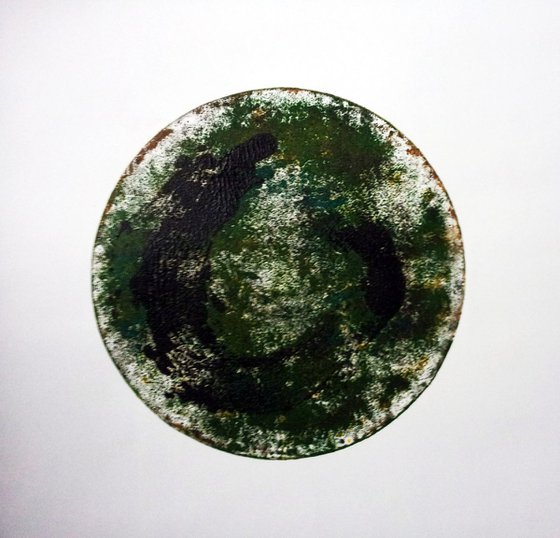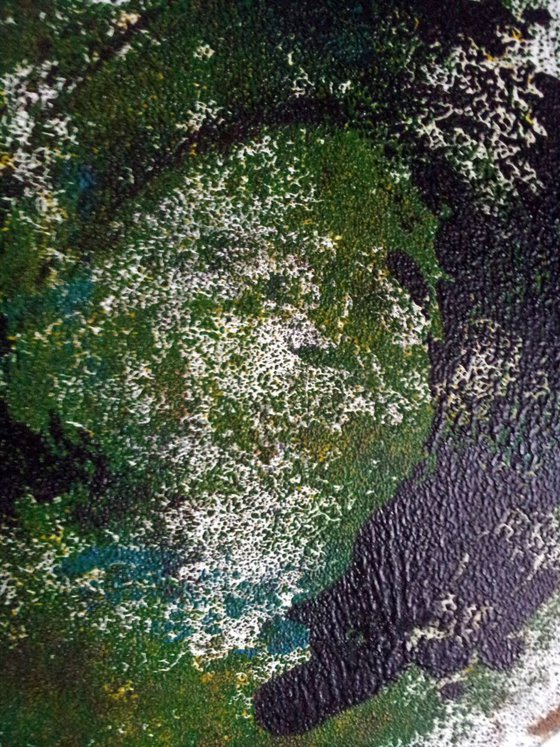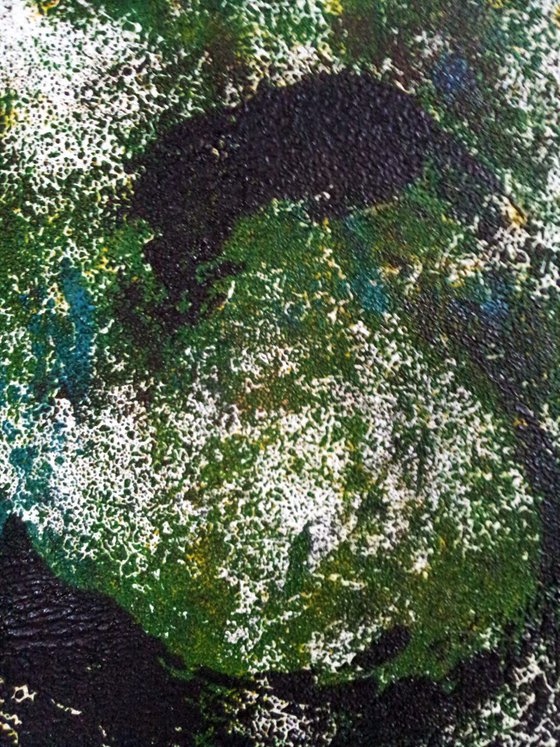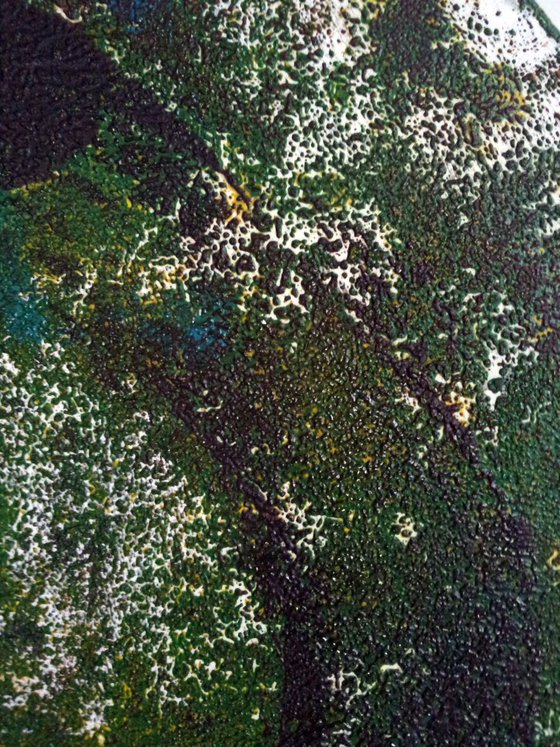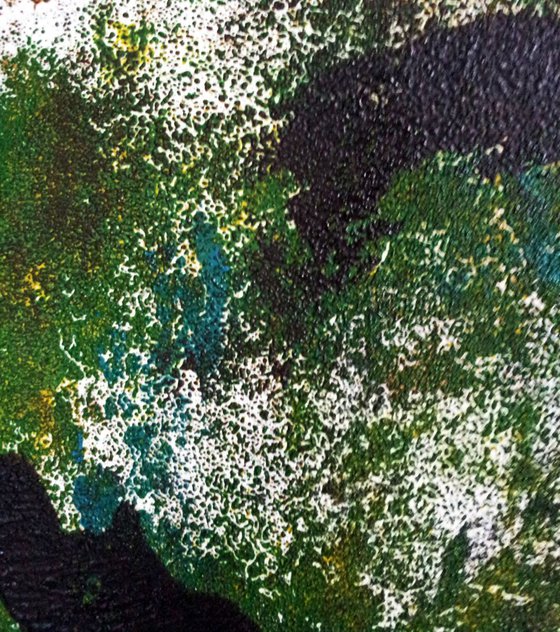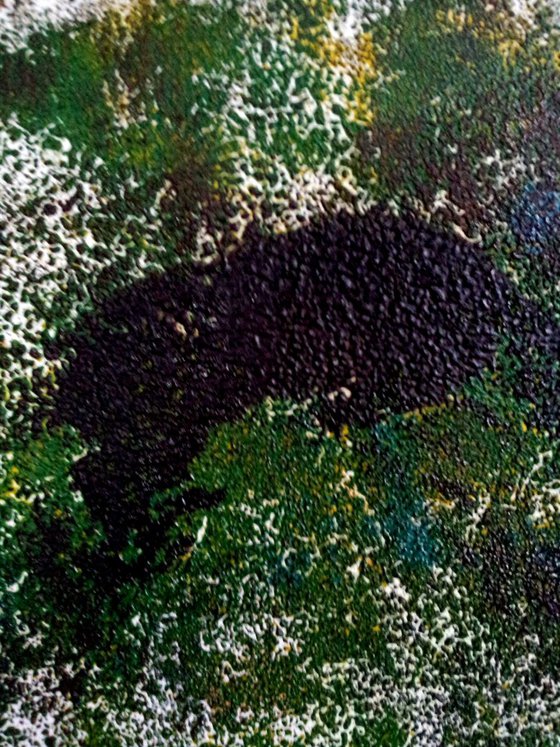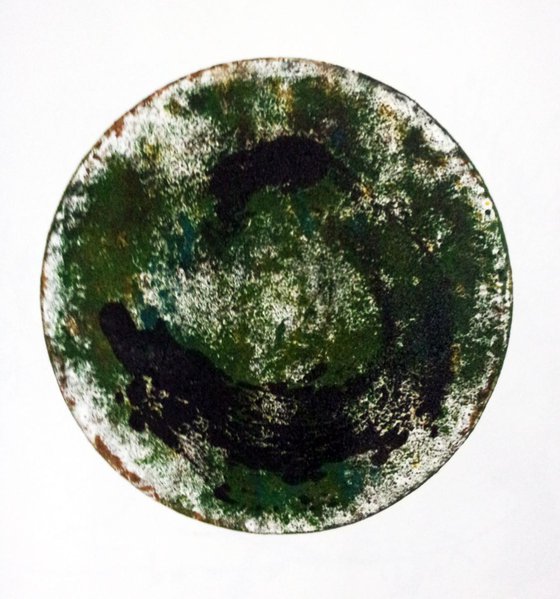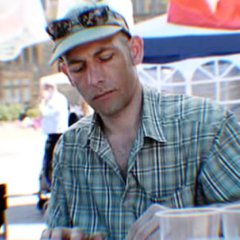- By medium
- By subject
- By budget
- Sales
- Gift cards
- Discover all art
- Artists
- Editors’ picks
- Ideas
Artwork description:
A series of monotypes using rock pigments collected from the seaside town of Watchet in West Somerset, U.K. and colours only available through industrial means. This explores ideas on the Anthropocene Age and our interventions with the landscape, extracting and re-introducing materials after manufacturing.
The series explores working collaboratively with the material and approaching the work through not having any pre-conceived idea before making the marks. The pigments are made into printing ink using medium and applied to the printing surface with a large pallet knife.
The proposition explored in this particular practice is the exploration of the space between initial chemical release in the mind towards thinking and the act of action before fully forming an idea in the mind. The action of the mark is made quick and direct to the surface, capturing the muscle action from the unconscious thought - seeing if it is possible to build layers of pre-thinking into an image to reveal something un-affected by any form of concept or conceptualised idea.
Through working with the material I am exploring an area I am becoming more involved with concerning epigenetic memory and inter-generational transference of memory revealed through the marks we leave behind - in this instance through the marks made in response to material, surface and action.
This image was created whilst thinking about the way in which humans have treated the Earth in the past during the Industrial Revolution. Through the philosophy of Samuel Coleridge and the movement he began, Romanticism, with a rewturn back to the beauty of the landscape, this work explores the mixing of natural pigments from the each and industrially made pigments from industry, either pigments made via industrial methods, therefore producing chemically made pigments that are colourfast dyes, or collected from rusted metal found in the landscape, strewn around, and made into printing ink. These explore thoughts and ideas on the way in which we draw materials from the earth, transforming through industrial processes and carelessly putting the toxic waste material back into the landscape in the past.
The image layers these processes symbolising the layering of time and resonating with the layering of sediments over time, leading to the Anthropocene Age.
Materials used:
Handmade Printing Ink on Cartiridge Paper, Industrial Pigments, Seawater from a hole left by a fossil hunter in Watchet, Somerset.
Tags:
#colourfull #running #time #playtime #print #printmaking #found #natural #monotype #objects #layering #industry #printing #moss rocks #collecting #manmade #anthropocene #industrialpigments #chanceepigeneticsENSO (2016) Print
by Adam Grose MA RWAAN
19 Artist Reviews
£250
- Print on Paper
- From a limited edition of 1
- Size: 52 x 52 x 0.1cm (unframed) / 32 x 32cm (actual image size)
- Signed and numbered on the back
- Style: Organic
- Subject: Abstract and non-figurative
- Hurry only 1 left in stock
Loading
Artwork description
A series of monotypes using rock pigments collected from the seaside town of Watchet in West Somerset, U.K. and colours only available through industrial means. This explores ideas on the Anthropocene Age and our interventions with the landscape, extracting and re-introducing materials after manufacturing.
The series explores working collaboratively with the material and approaching the work through not having any pre-conceived idea before making the marks. The pigments are made into printing ink using medium and applied to the printing surface with a large pallet knife.
The proposition explored in this particular practice is the exploration of the space between initial chemical release in the mind towards thinking and the act of action before fully forming an idea in the mind. The action of the mark is made quick and direct to the surface, capturing the muscle action from the unconscious thought - seeing if it is possible to build layers of pre-thinking into an image to reveal something un-affected by any form of concept or conceptualised idea.
Through working with the material I am exploring an area I am becoming more involved with concerning epigenetic memory and inter-generational transference of memory revealed through the marks we leave behind - in this instance through the marks made in response to material, surface and action.
This image was created whilst thinking about the way in which humans have treated the Earth in the past during the Industrial Revolution. Through the philosophy of Samuel Coleridge and the movement he began, Romanticism, with a rewturn back to the beauty of the landscape, this work explores the mixing of natural pigments from the each and industrially made pigments from industry, either pigments made via industrial methods, therefore producing chemically made pigments that are colourfast dyes, or collected from rusted metal found in the landscape, strewn around, and made into printing ink. These explore thoughts and ideas on the way in which we draw materials from the earth, transforming through industrial processes and carelessly putting the toxic waste material back into the landscape in the past.
The image layers these processes symbolising the layering of time and resonating with the layering of sediments over time, leading to the Anthropocene Age.
Materials used:
Handmade Printing Ink on Cartiridge Paper, Industrial Pigments, Seawater from a hole left by a fossil hunter in Watchet, Somerset.
Tags:
#colourfull #running #time #playtime #print #printmaking #found #natural #monotype #objects #layering #industry #printing #moss rocks #collecting #manmade #anthropocene #industrialpigments #chanceepigenetics14 day money back guaranteeLearn more
